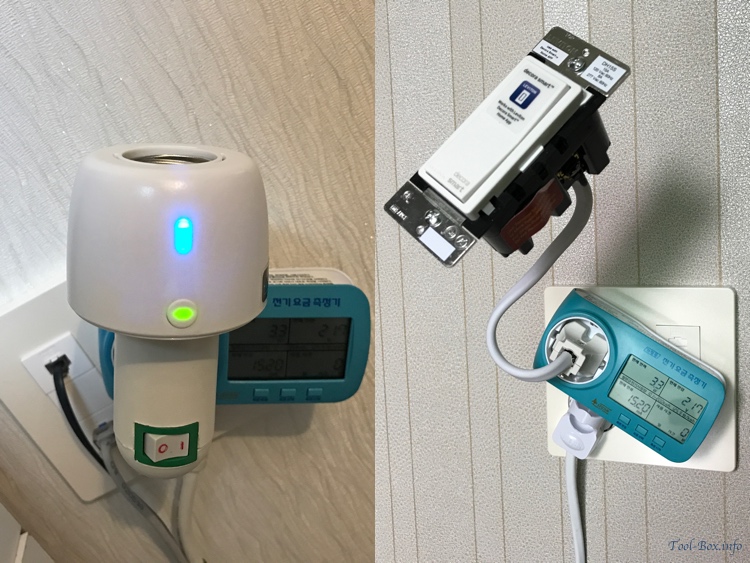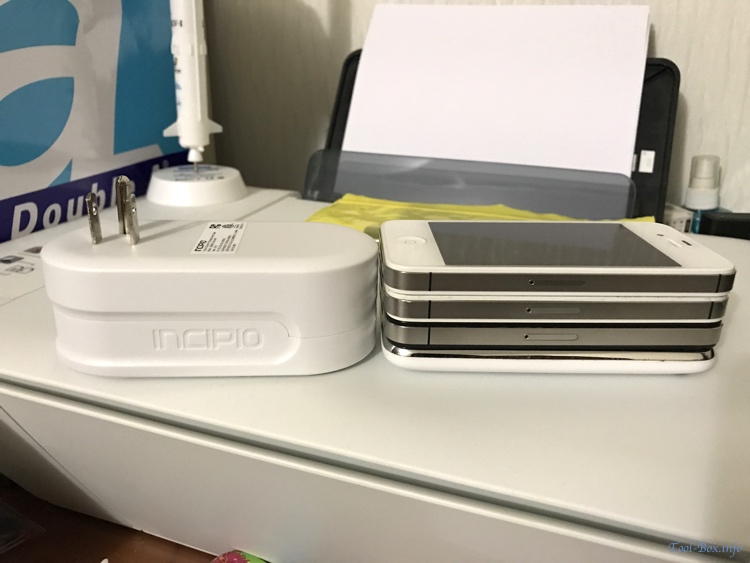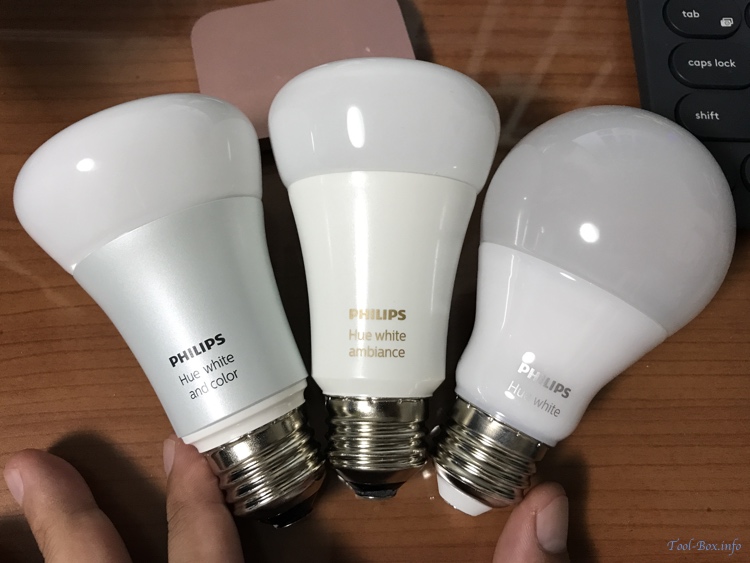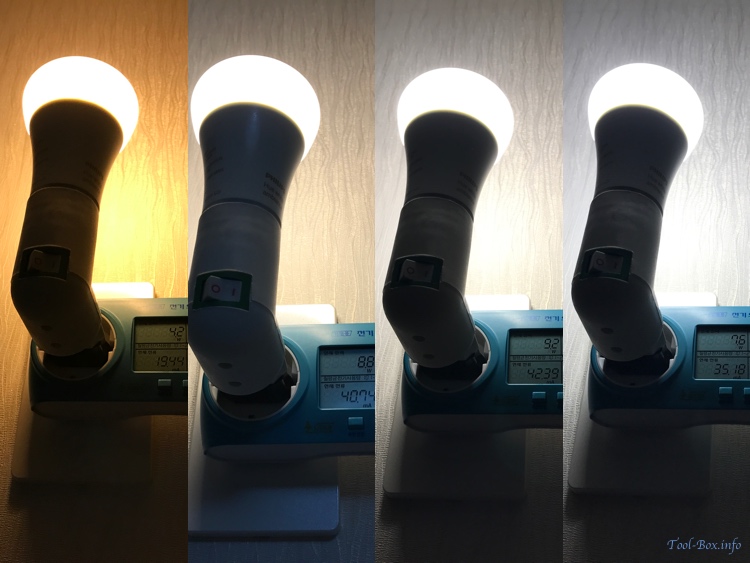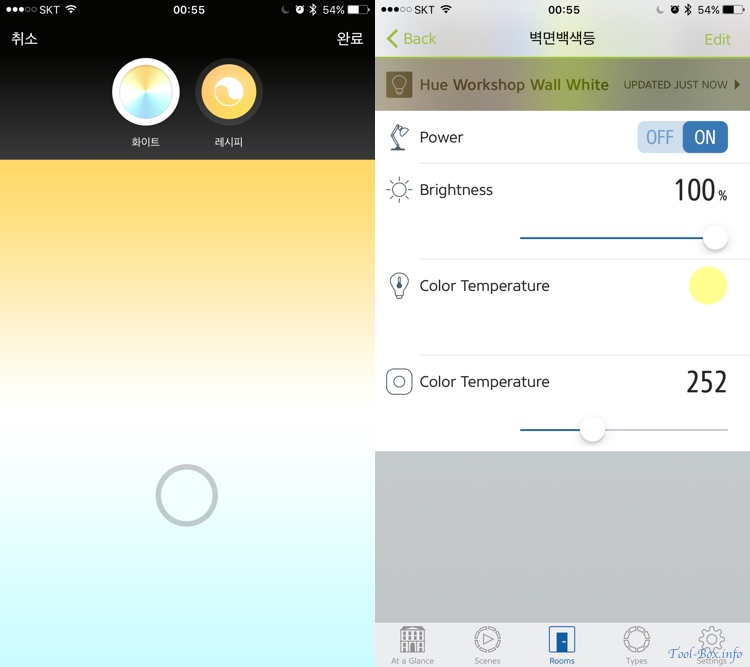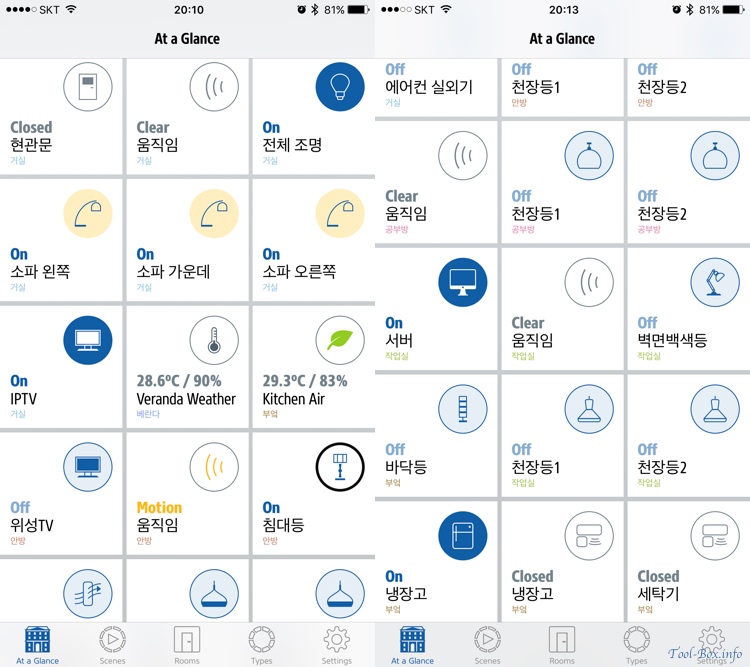How much power does HomeKit use?
Posted by Wesley onHome automation devices have to be on standby at all times to respond to commands. This means that the baseline power consumption will increase as more devices are added. So if you're installing them not just for convenience but for more efficient energy use, you have to be conscious of the level of power that they may entail.
Unfortunately, detailed power consumption data are not usually found in the technical specs, likely because they are not deemed important. I had to take individual measurements to get the whole picture, and here are the results for the HomeKit devices I have.
| Company | Name | Off | Min. | Max. | Rated |
|---|---|---|---|---|---|
| Smart Power Plug | |||||
| Elgato | Eve Energy | 0.68 | - | 1.01 | 2,500 (EU)1 |
| Incipio | CommandKit W. Smart Outlet | 1.70 | - | 2.20 | 1,200 (US) |
| Koogeek | Smart Plug P1 | 0.92 | - | 1.60 | 2,500 (EU)1 |
| Smart Light Switch / Adapter | |||||
| Incipio | CK W. S. Light Bulb Adapter | 3.32 | - | 3.39 | 1502 |
| Leviton | DH15S-1BZ | 3.15 | 3.153 | 3.27 | 6004 |
| Koogeek | Smart Switch KH02 | 1.30 | 1.955 | 2.60 | 600 |
| Smart Light Bulb | |||||
| Philips | Hue White and Color Ambiance | 0.43 | 1.7 | 8.6 | 10.0 |
| Hue White Ambiance | 0.66 | 1.5 | 10.2 | 10.5 | |
| Hue White | 0.38 | 1.6 | 9.2 | 9.0 | |
| (Initial Peak) | 13.86 | ||||
| Hue Bridge | - | 1.12 | 1.26 | 2.32 | |
Off: The device is connected to the power but is turned off (i.e. standby mode).
Min.: Device operating under the lowest power mode possible.
Max.: Device operating under the normal or highest power mode possible.
(Minimum and Maximum values are measured with no external apparatus attached.)
Rated: How much the the device is rated to draw electricity at maximum.
1. Or 220V mains. 1,800W for the U.S. mains (120V).
2. For the LED and CFL bulbs. 600W for incandescent and halogen bulbs.
3. The indicator LED light is turned off.
4. For the LED and CFL bulbs. 1,800W for incandescent bulbs.
5. Only one switch is turned on.
6. Steadily decreases to the stable level (9.2W) over the span of 30 minutes.
It became fairly evident that the consumption profile is quite different between manufacturers even though the devices serve essentially the same purpose.
Among the smart power plugs, Elgato Eve Energy had the lowest energy footprint. Using Bluetooth LE instead of Wi-Fi for connection may have helped. It still consumes about twice as much standby power as the Wi-Fi-based Witty smart power plug for SKT Smart Home ecosystem, so it may be that HomeKit protocol is inherently more power intensive.
Incipio's products turned out to be the most energy inefficient, which is not too surprising given how big and rudimentary the implementation was. The power plug consumes more than twice as much power both in standby and active state compared to Eve Energy. The light bulb adapter consumes 3.3W just for having it plugged, without any light bulbs. This seems especially excessive given the fact that many electrical appliances try to keep the standby power under 1W.
Leviton's smart switch was a bit of a surprise in a couple of ways. The power consumption remains pretty much the same whether it's on or off, unlike others. Usually the power relay itself consumes a bit of power when it's on, so I'm guessing that they implemented a novel way to avoid this. Still, the baseline power consumption was too high for my tastes. I asked the Leviton Tech Support what the expected standby power was and I was told it would be about 1.2W. I wonder if the huge discrepancy between the claimed and the measured values stem from the different mains voltage.
Koogeek's light switch performed respectably, consuming about 60% less standby power than the competition despite being 2-gang. The 1-gang version claims to consume 0.75 to 1W on the company website, and this result makes that believable. On the other hand, the active mode consumes more than 0.6W extra per switch, which is more than any other switches or plugs compared. Seeing that the situation is similar with the company's power plug, I suspect that the combination of the relay and the power metering functions might be the culprits.
On the topic of the smart light bulbs, I only had the Philips Hue solution at hand to look into. But I owned all three types of the Hue light bulbs, so I was able to have some meaningful comparison. Hue White and Color Ambiance ("Color") is capable of full range of colours with colour temperature range of 2,000K to 6,500K. I had the 2nd generation bulb to test. Hue White Ambiance ("Ambiance") can only do white colour on the range of 2,200K and 6,500K. Hue White ("White") does white colour at a fixed colour temperature of 2,700K, similar to incandescent bulbs. All bulbs can adjust brightness.
On the technical specs, all the bulb types are supposed to have a standby power of 0.5W or lower. Both the Color and White bulbs met this, but for some reason Ambiance bulb could not. It's especially strange given that the official Philips website actually lists its standby power to be 0.1W.
As for testing the maximum power consumption, it was a bit tricky for the Color and Ambiance bulbs because different color or temperature settings result in different level of consumption even if the brightness is set to maximum. The specifications say that both types are the brightest at 4,000K, but the available HomeKit apps (including Philips Hue) don't have an option to directly specify the temperature. After much testing, these were the settings I arrived at for the maximum power consumption:
Color: Hue 45° (middle of orange[30°] and yellow[60°]), Saturation 25%
Ambiance: "ct" value of 252 (from the range of 153[6500K] to 454[2200K])
The Ambiance bulb consumed 10.2W at this setting, close to the 10.5W claimed. But the Color bulb only went up to 8.6W, falling short of the 10W rating. Meanwhile, White bulb exhibited a strange behaviour where it started consuming almost 14W right after being turned on. It would then steadily settle down to 9.2W over the course of 30 minutes, almost matching the 9W written on the bulb. I'm not sure why this happens, and furthermore, turning it off for a moment and turning it back on would restart the process. So if you use this bulb for a short period of time in a single session, you might use more electricity than you think.
Let's see how all this ties up to an actual use. At my house, I have six Philips Hue light bulbs (Color: 4, Ambiance: 1, White: 1) and a bridge, three Koogeek light switches, and six Elgato Eve Energy plugs (three are always on) connected to power. I also have nine sensors and three remote switches around the house, but they run on batteries and aren't counted.
Light bulbs: 0.43 x 4 + 0.66 x 1 + 0.38 x 1 + 1.12 = 3.88
Light switches: 1.30 x 3 = 3.90
Power plugs: 0.68 x 3 + 1.01 x 3 = 5.07
Total: 3.88 + 3.90 + 5.07 = 12.85
Monthly usage: 12.85W x (24 x 30)h = 9.252kWh
With the most efficient light switches and power plugs from the comparison installed, the HomeKit installation added about 9kWh to the monthly electricity use. I have striven to make my house as electrically efficiently possible in the previous months and before HomeKit came along it consumed around 150kWh a month, which is markedly lower than similar houses and about 30 to 40kWh lower than when I started putting big efforts in. I would now be sacrificing some of the previous savings to convenience.
But all the trial and errors I went through by buying multiple products was worth it. You see, the power consumed by HomeKit may have doubled or so if I wasn't as careful. Assuming that I used the Incipio power plugs and Leviton switches:
Light bulbs: (same)
Light switches: 3.15 x 3 = 9.45
Power plugs: 1.70 x 3 + 2.20 x 3 = 11.70
Total: 3.88 + 9.45 + 11.70 = 25.03
Monthly usage: 25.03W x (24 x 30)h = 18.0216kWh
The baseline usage would have jumped by 18kWh instead, or 9kWh more than the current level. This is like having an additional large flat-screen TV turned on for 3 hours every day. All in all, convenience of having a house wired with HomeKit does come at some cost (of electricity), but with smart investment we can minimize it.
Defined tags for this entry: Apple TV 4th Gen, electricity, Elgato Eve, HomeKit, Incipio, IoT, Koogeek, Leviton, light fixture, lights, Philips Hue, power plug, power switch, smart plug
